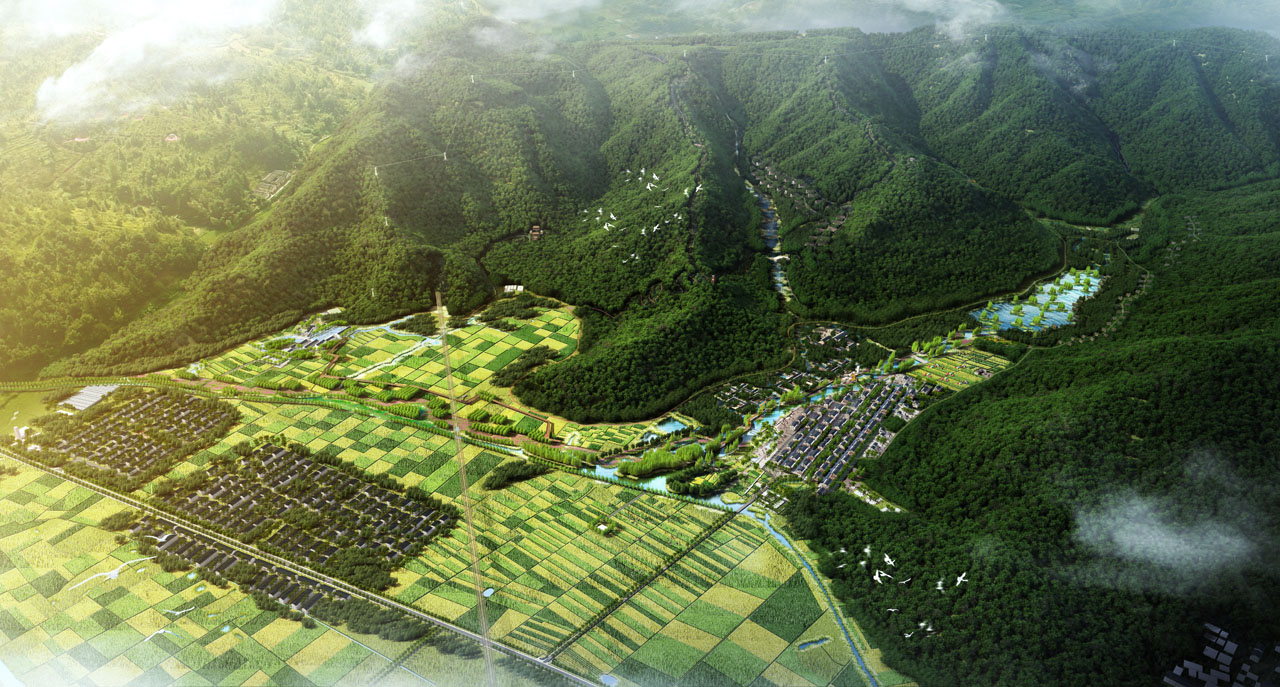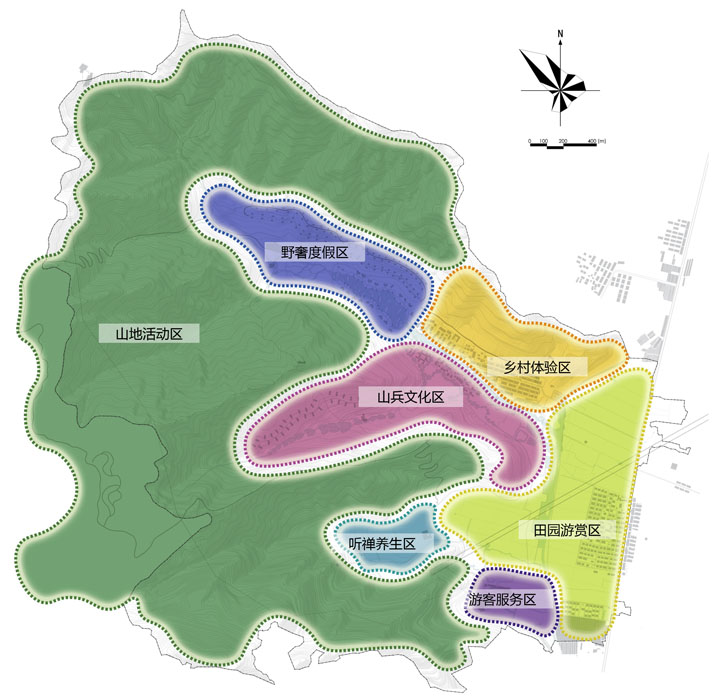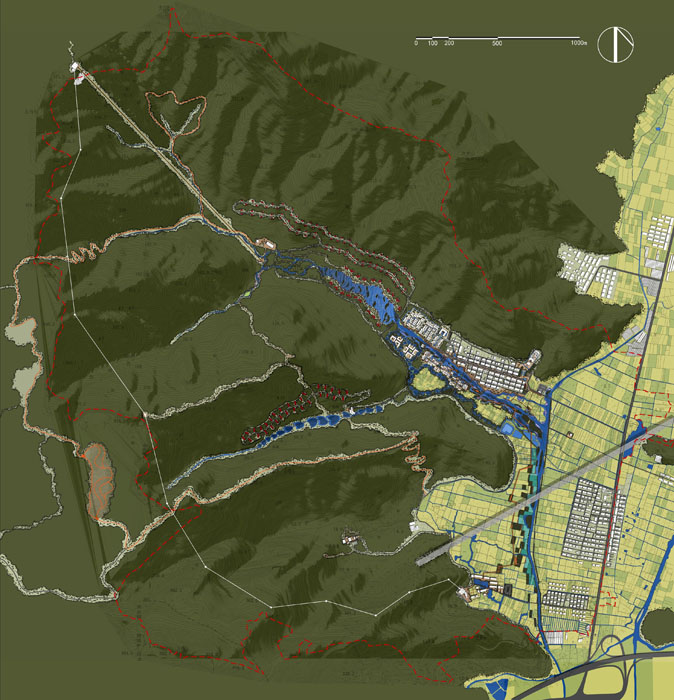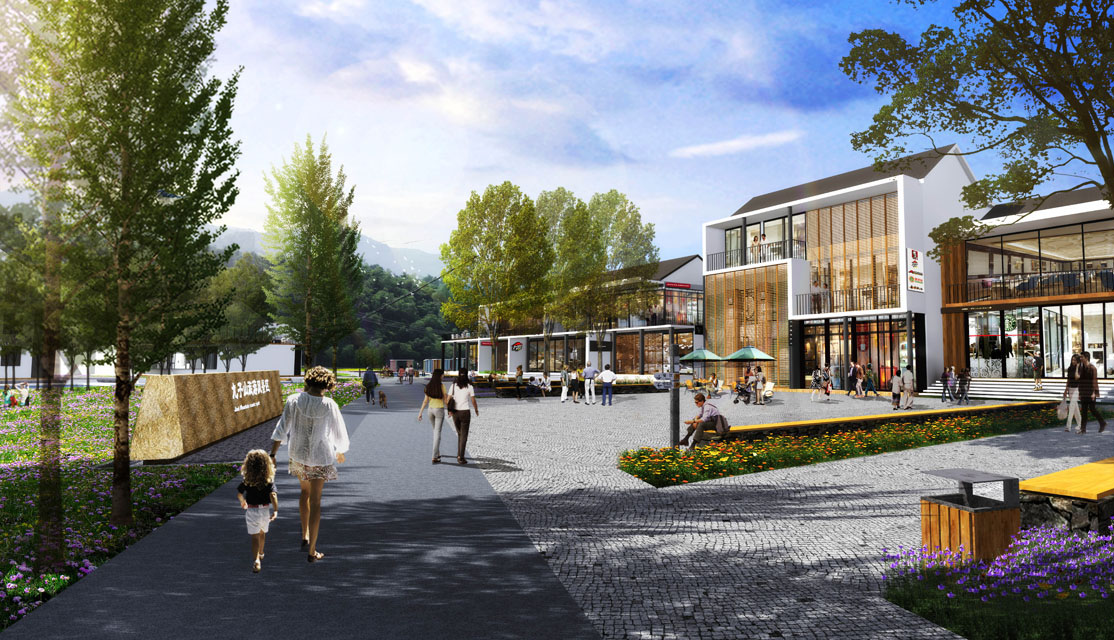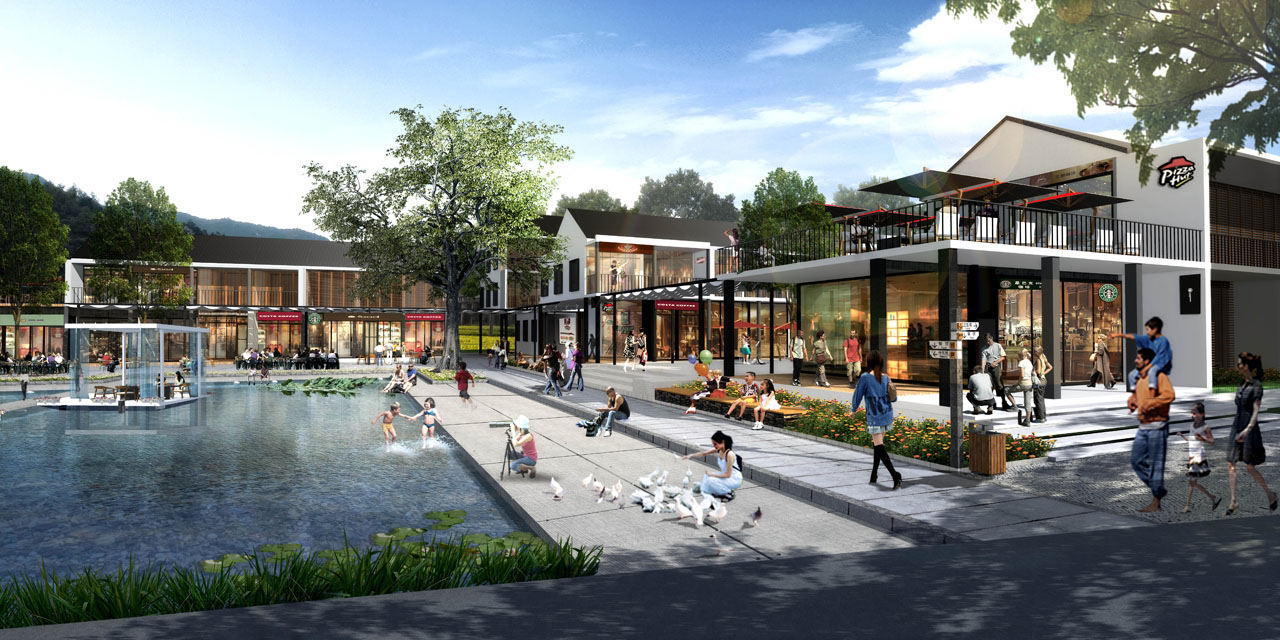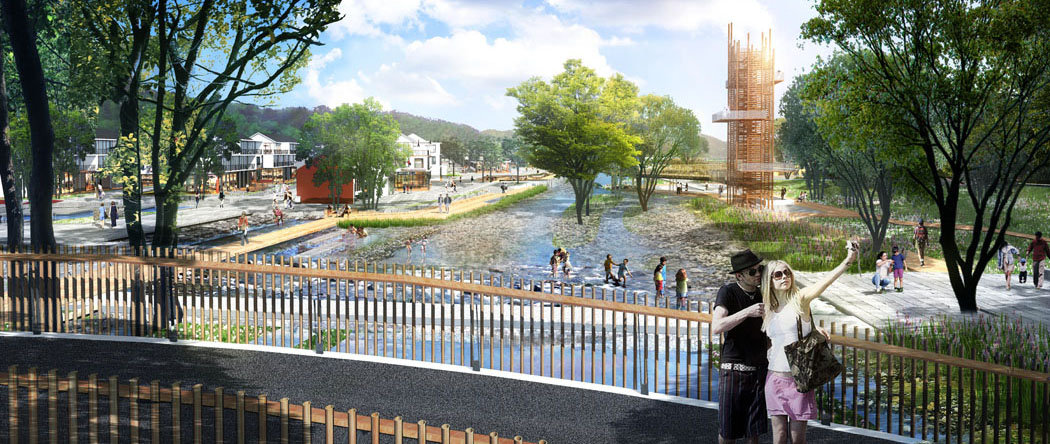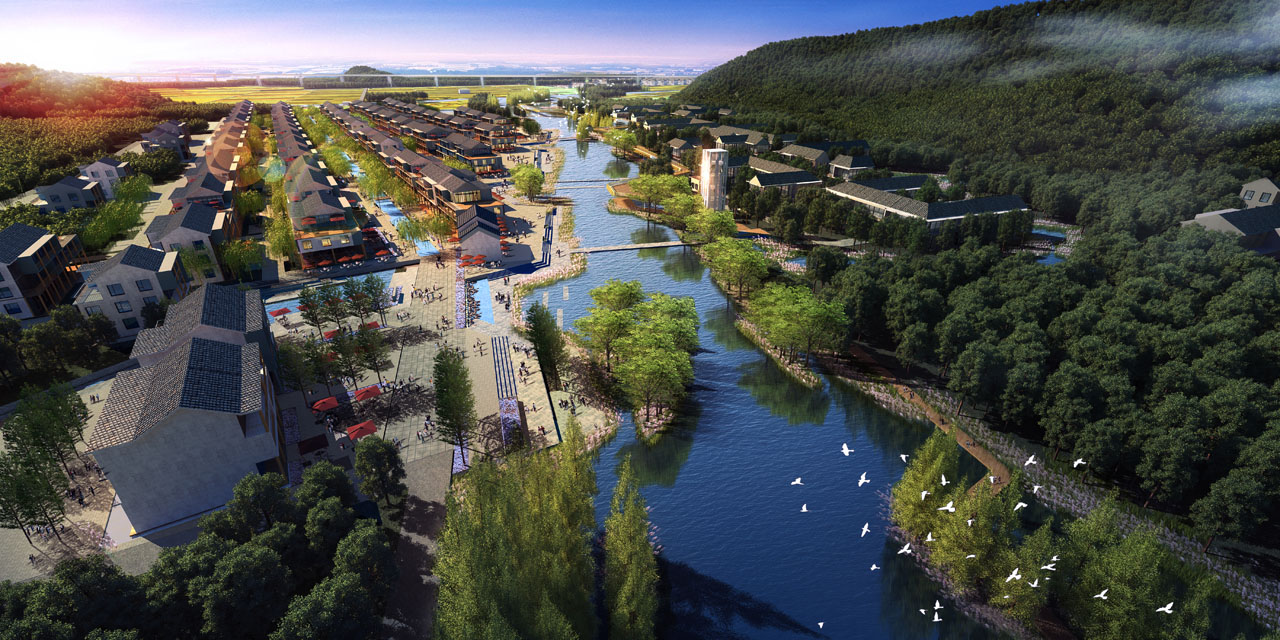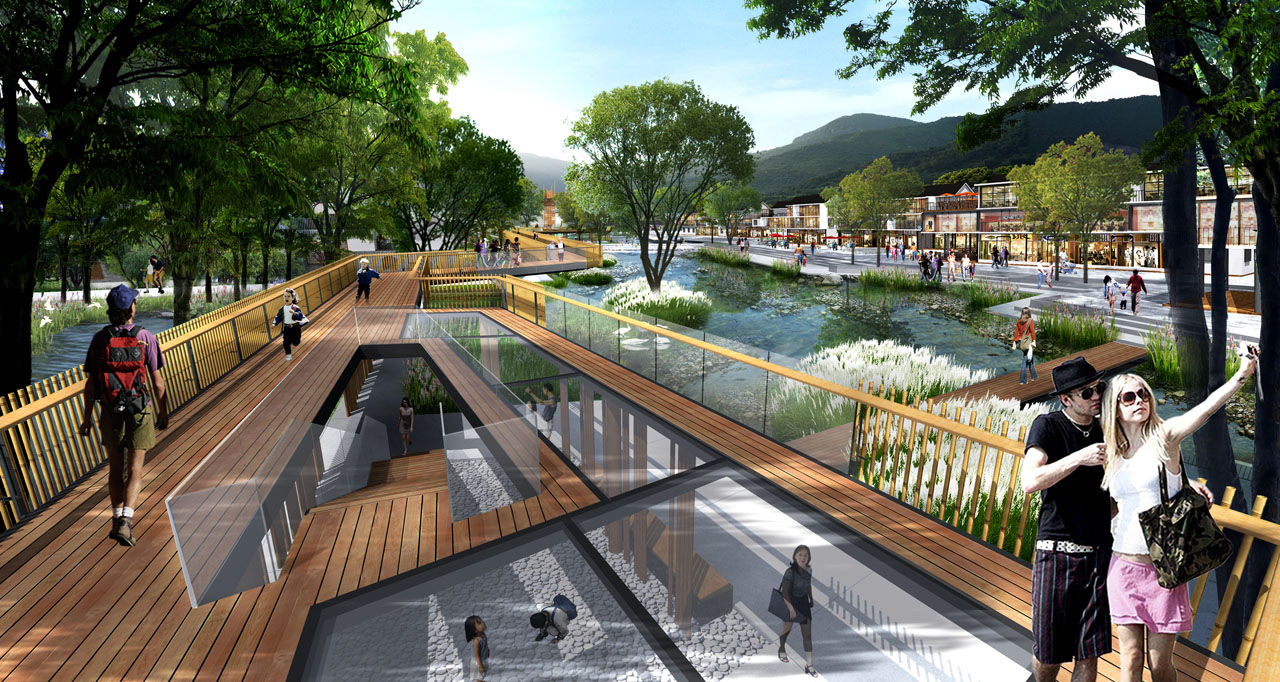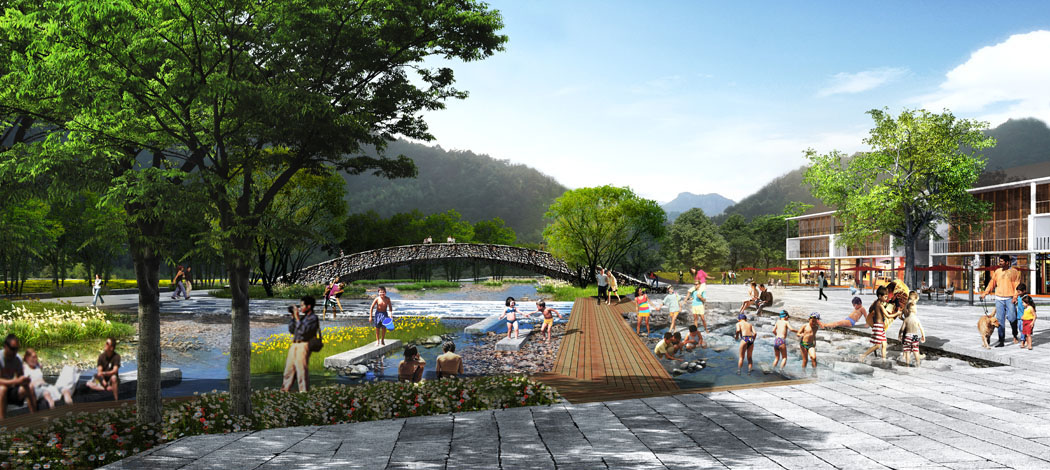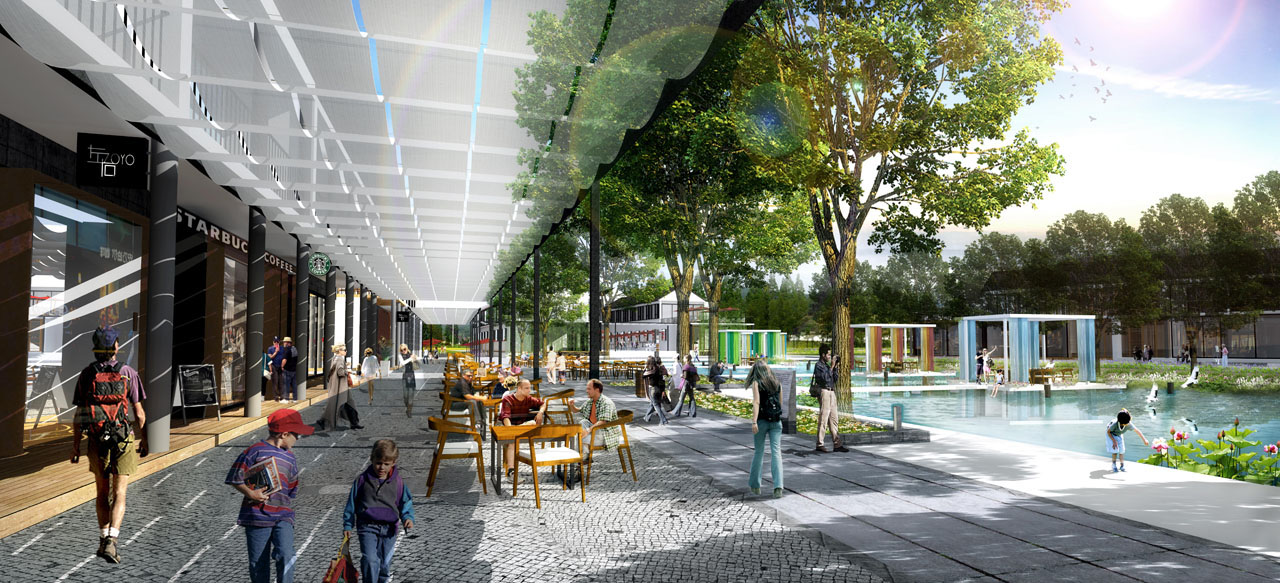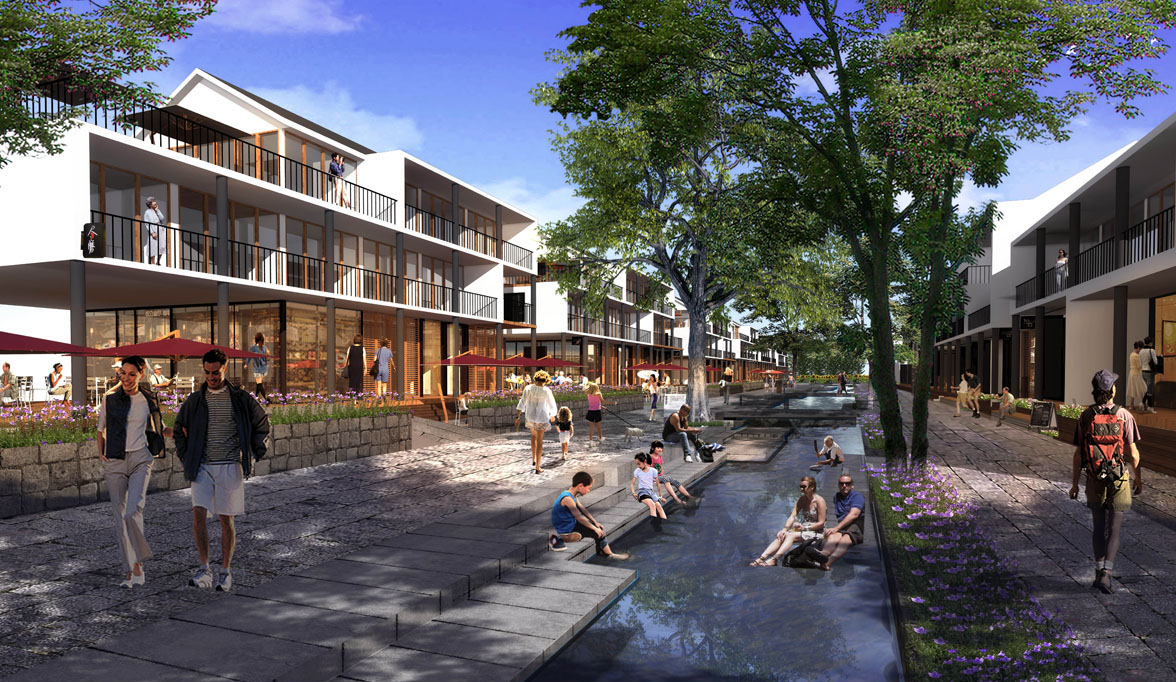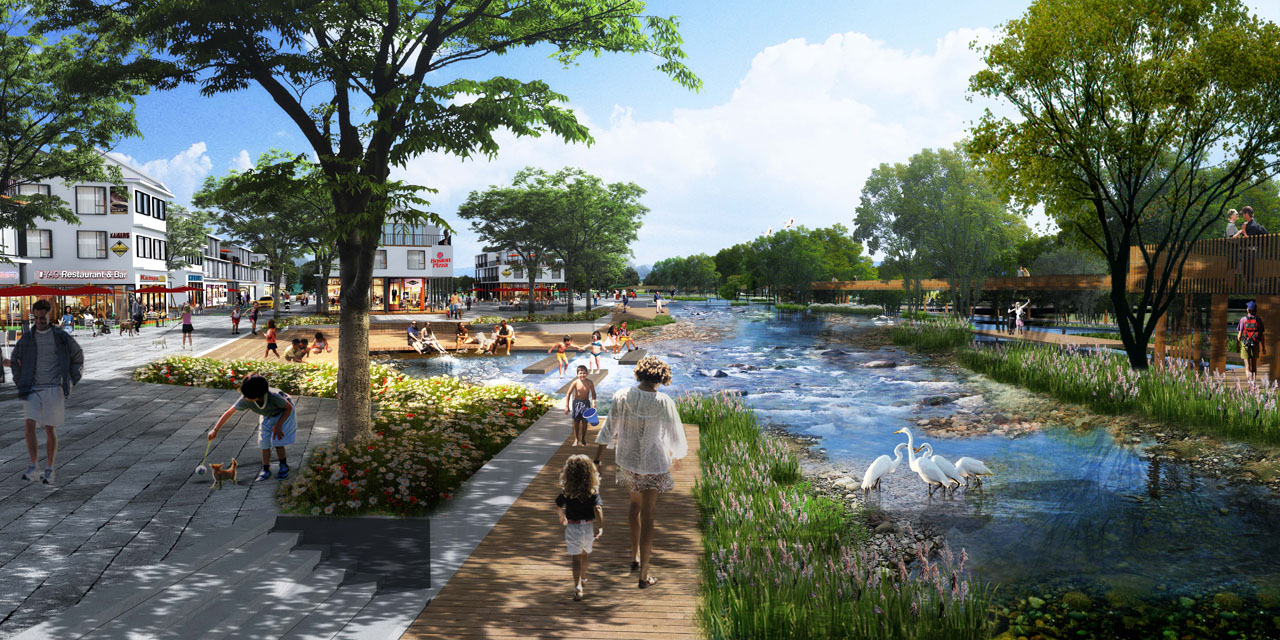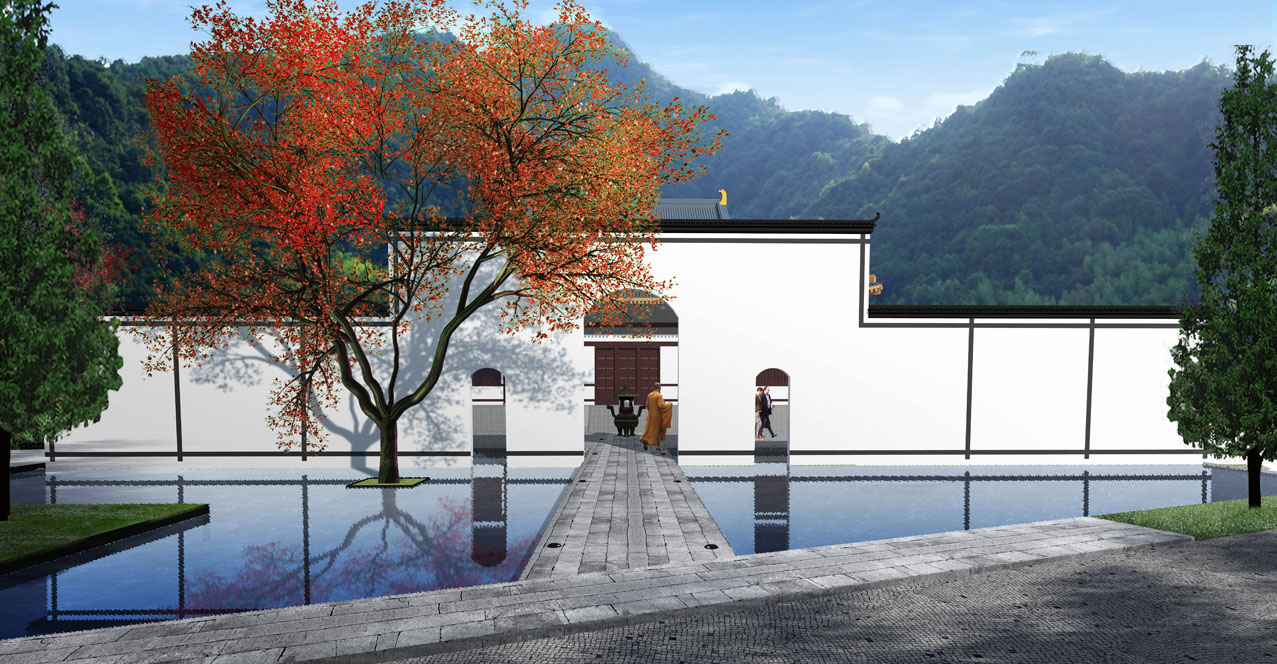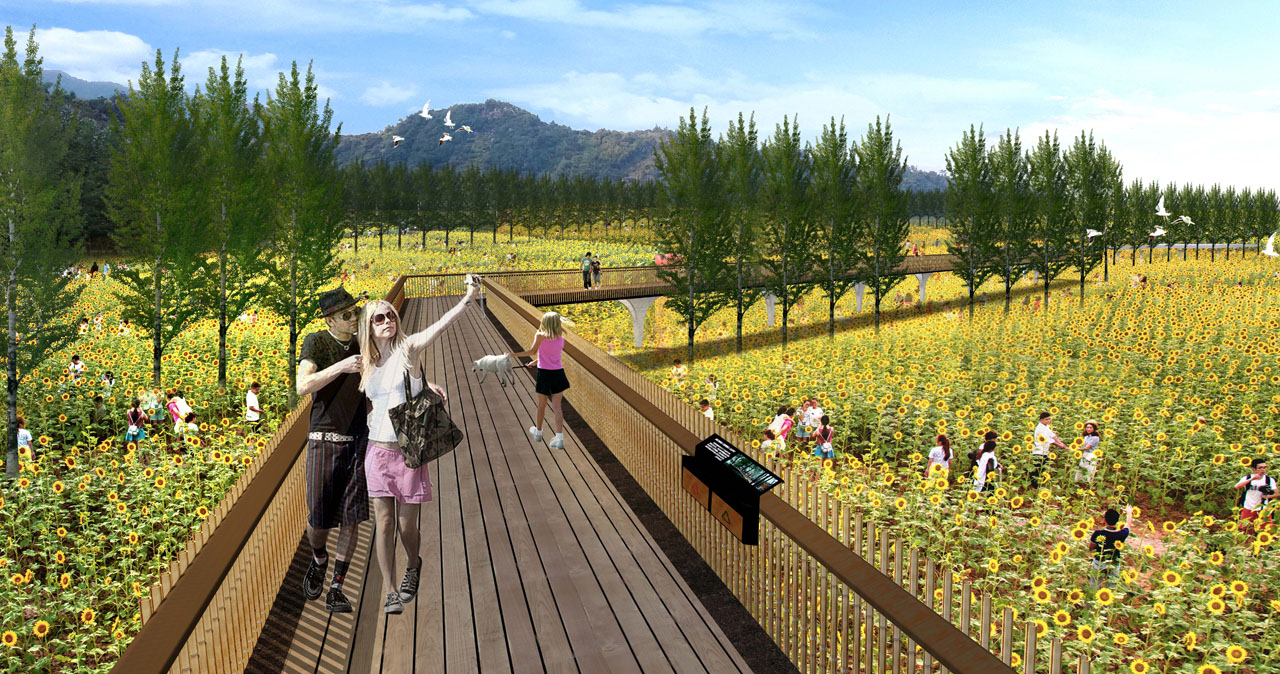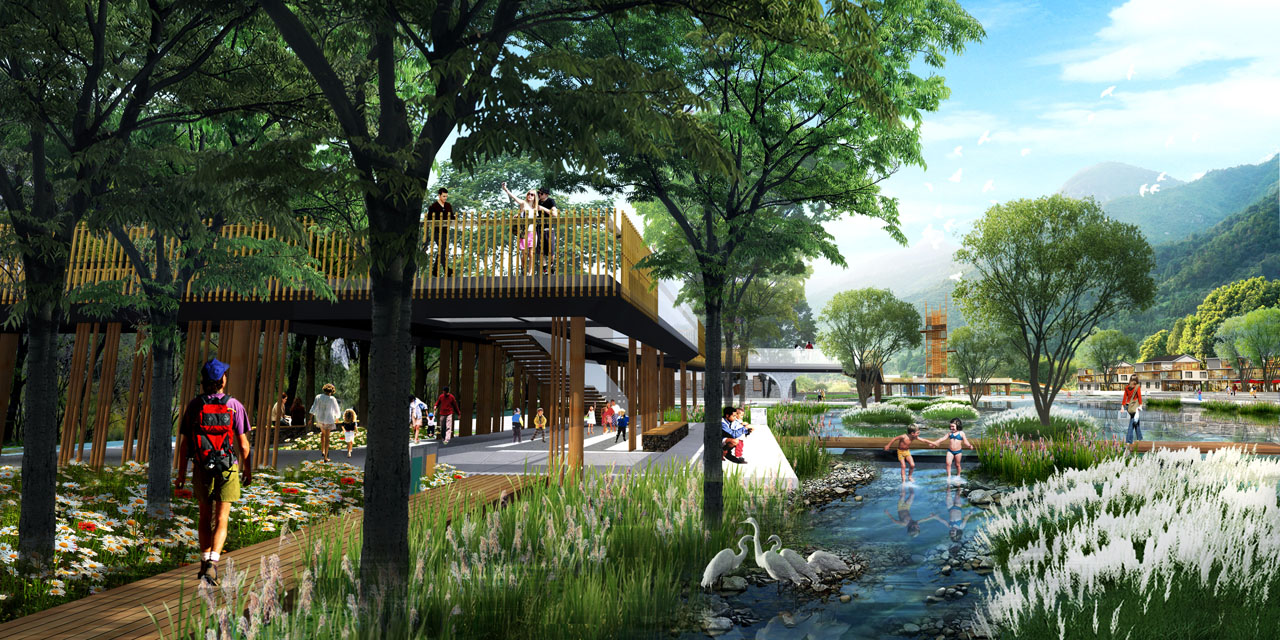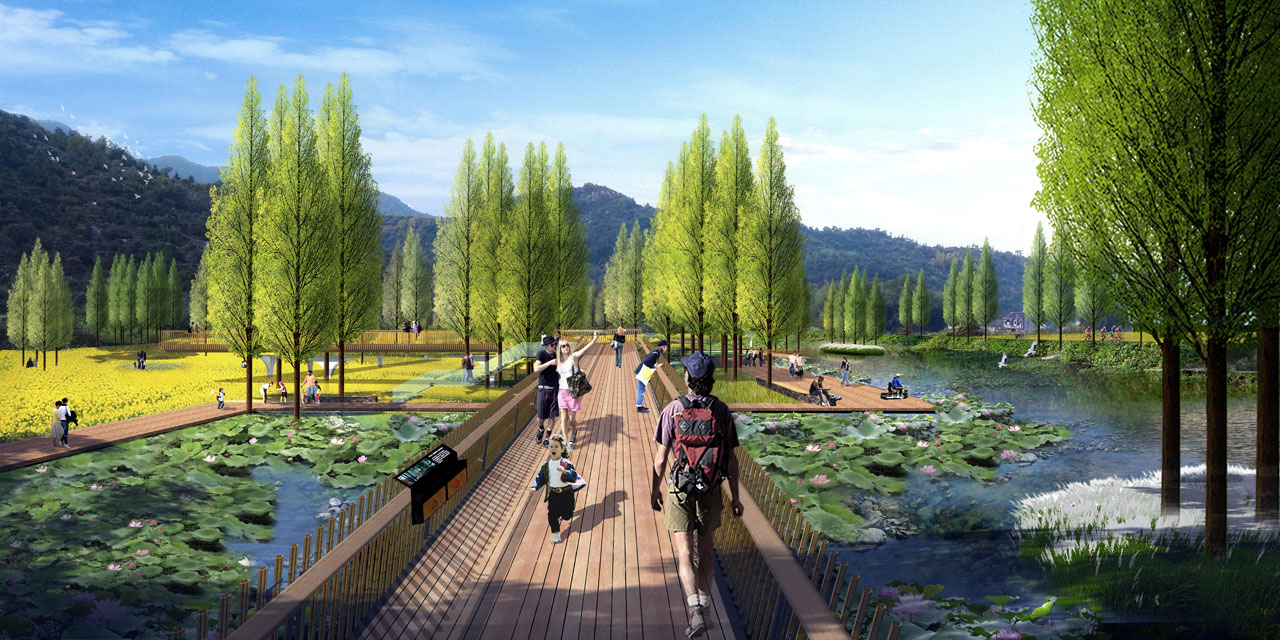Zhejiang Taizhou Jiuzi Mountain Agri-Tourism Complex
Project Information
- Project Location:
- China Taizhou, Zhejiang
- Project Scale:
- 958.4 Hectares
- Design Time:
- September 2017
Project Profile
1. Project Statement
The Jiaojiang Tianyuan Complex is located in the northern suburbs of Jiaojing District, Taizhou City, with convenient transportation, developed water systems, pleasant climate, and high vegetation coverage. Currently dominated by low-end agricultural planting, the site is traversed from west to east by Shanbing Creek, which is mostly solidified, with perennial water shortages leading to poor natural landscape.
The planning proposes solutions to six major issues concerning land use, landscape, transportation, ecology, architecture, and culture. It aims to attract crowds by integrating tertiary industries, transforming the site into a pastoral complex centered on ecological agriculture, featuring rural leisure experiences, and aiming to lead rural industrial transformation. It integrates forest sports experiences, eco-leisure tourism, and creative agriculture into the leisurely Shanbing Valley pastoral complex.
- Mountain Activity Zone: Includes activities such as hang-gliding, mountain biking, sightseeing cable cars, hiking, stream tracing, and mountain motorcycles.
- Wilderness Resort Area: Includes wetland restaurants, hotel accommodation services, conference forums, etc.
- Shanbing Cultural Area: Includes water street workshops, waterfront strolls, traditional Shanbing opera stages, etc.
- Rural Experience Area: Includes outdoor picnic projects, scenic water streets, and photography at Jing Temple.
- Countryside Sightseeing Area: Includes greenhouse exhibition areas, bayberry wine chateaus, agricultural landscape displays, high-speed agricultural landscape boxes, etc.
- Listening to Zen Health Area: Includes Veta Temple attractions, temple vegetarian food experiences, and Zen cultural experience projects.
- Visitor Service Area: Mainly the village tourism service reception center and related facilities.
2. Objective and Challenge
Based on the designer's investigation of the current situation, the area is still primarily focused on agricultural planting, with the bayberry base being somewhat famous but having a weak industrial chain and low product added value. The valley has the greatest potential for tourism development, but there is a limited amount of construction land. Shanbing Creek's river course is solidified and has lost its spirituality, with high vegetation coverage forming the basis for recreation and habitat environments. Jiuzi'ao currently has multiple cemeteries, and the future east-west high-speed rail traversing the site creates obstacles to landscape transformation. Current transportation only meets the commuting needs of villagers. The architectural styles vary greatly, with newly built residences being too Westernized.
The designer, based on fully exploring the existing advantages and resources of the site, combined with upper-level support policies, found that under Zhejiang Province's policies for hillside towns, rural tourism has grown rapidly in recent years. However, rural tourism in Taizhou City started early but with low quality, many policies but slow transformation, with Shanbing and Jiuzi blocks being strategic points for expanding tourism in Jiaojing District. As the closest rural tourism area to Zhang'an Ancient City, the site will meet the demand for rural leisure on both sides of the river, satisfying regional weekend and holiday leisure, vacation, and health needs, becoming a new strategic point for planning both sides of the river.
The planning has become a new model for rural industrial transformation and construction upgrading in Jiaojing City; a leading area for the construction of suburban pastoral complexes in Zhejiang Province; and an ideal ecological habitat and tourism destination for contemporary people at the national level.
3. Design Strategy
Economic Production Strategy: Demolish old sites for reuse, negotiate for land use under hillside town policies. Agricultural upgrade in three steps. Introduce Demeter technology, commercialize operations, transform ordinary farms into organic farms, and gradually develop Zhejiang's first Demeter farm; integrate agriculture and tourism, develop a 1+3 compound industry. Transition from traditional, single "primary production-driven" rural homestays to a modern "leisure+" model suitable for suburban villages.
Negative Landscape Strategy: Jiuzi'ao has bamboo forests and a quiet atmosphere, suitable for combining temples for meditation and health activities; mitigate high-speed rail impacts by using green structures to reduce visual and auditory disturbances.
Road Strategy: Establish a complete transportation network system, use various transportation methods to provide diverse travel experiences for tourists, and set up large parking lots at major entrances and exits to meet group reception needs.
Ecological Strategy: Restore natural ecological river sections, introduce water into the site, create distinctive places through different regional vegetation characteristics, and enrich landscape diversity within the site. Unsuitable areas for construction should be restored as river beaches, wetlands, or economically submerged aquatic crops; return river beaches and wetlands to Shanbing Creek, reduce flood heights, and restore the original ecological features of mountain streams (wetlands + poplar forests) on the southern bank. Design the upper reaches of Shanbing Creek into a terrace landscape method, decompose large reservoirs into tiered terraces, disperse reservoir storage, and resolve nearly 15 meters of high difference, forming a hydrophilic water surface. The village section uses wetland poaching methods as a flood control area during heavy rains, storing rainwater after rain, and can alleviate the disaster of mountain floods in rainy seasons and droughts without water.
Building Strategy: Revamp existing buildings with commercial functions, preserve ancestral temples and temples, and create recreational nodes with place memories. For residential transformation, retain the original structure unchanged, partially demolish roofs and walls. Break the original architectural rigidity and uniform facade sequence. Enhance architectural facade effects. For residential buildings transformed into commercial buildings, retain the original structure unchanged, partially demolish roofs and walls. Break the original architectural rigidity and uniform facade sequence. Add a second-floor activity and viewing platform, with overall building facades dominated by floor-to-ceiling windows, while connecting front and rear buildings with corridors.
4. Conclusion
Through the designer's analysis and transformation of the site's current situation, ecological environmental issues have been addressed, enhancing the site's landscape visibility, transforming low-attractiveness village domains into well-known ecological tourism areas within the region. It truly achieves closeness to nature without destruction, meets the leisure and recreational needs of citizens, and allows nature to recuperate and rejuvenate. It has been constructed as an ecological village with mountains, water, forests, fields, and cities integrated into one, known as "houses in the forest, gardens in the mountains".
